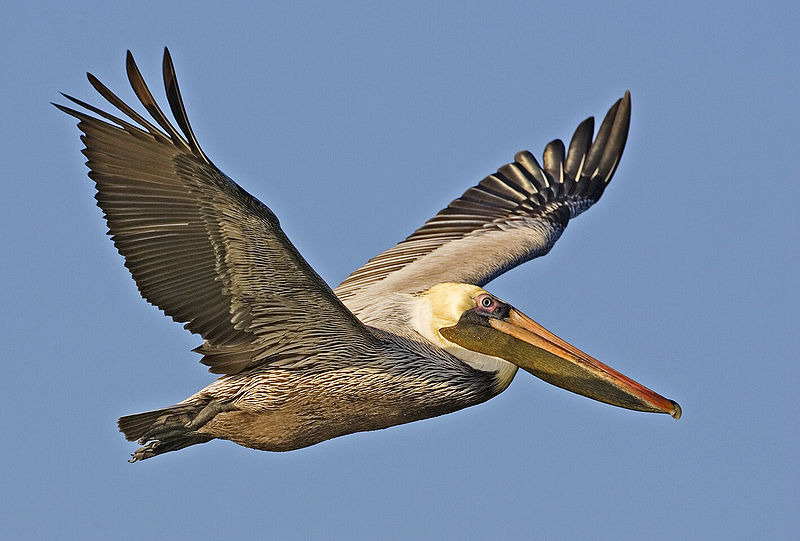Science News
Pelicans in Oil

If you have seen any of the terrible images of brown pelicans drenched in oil, you’ve no doubt experienced that terrible pit in your stomach. Follow that with headlines this week that say it may be more humane to euthanize these animals than to clean them, and the pit grows deeper.
Over the past two days, New Scientist, Wired and Discover have published some great articles about the pelicans’ plight. If you missed them, here’s a brief summary.
Brown Pelican Population
New Scientist reports that the species of brown pelicans as a whole will be okay, because much of the population actually resides in Peru. However, for the sub-species that live and breed along the Gulf coast:
The slicks threaten the birds and their fragile wetland habitat only a few months after brown pelicans were removed from the US federal endangered and threatened species list in November last year. The birds had been on the list since 1970 after the pesticide DDT poisoned and nearly wiped out pelicans across the country. At the time Louisiana, where the pelican is the official state bird, lost its entire population. After years of resettling individual birds from Atlantic coast populations, Louisiana was able to boast the largest brown pelican population of any Gulf state, with 16,000 nesting pairs in 2004.
It goes on to say that brown pelicans could go back on the Endangered Species List:
If populations drop significantly in the Gulf, brown pelicans could be relisted, even if populations along the Pacific and Atlantic coasts remain stable.
Wired tackles the entire Endangered Species Act in a post called “Oil Disaster Shows Need for Endangered Species Act Overhaul”. The posting argues that while the act does cover impacts like ship traffic and actual oil wells, it should also consider the impacts of an oil spill.
“We need to include disaster planning in the Endangered Species Act consultation process,” said environmental lawyer Keith Rizzardi. “We can learn from experience.”
Rizzardi intends to discuss changes to the Act at the next meeting of the National Oceanic and Atmospheric Administration’s Marine Fisheries Advisory Committee, of which he is a member. Congress has the ultimate responsibility for changing the law, which would be relatively easy, requiring little more than amendments to its wording.
Clean vs. Kill
New Scientist also describes the cleaning and recovery process, while Discover’s 80beats blog takes on the cleaning vs. euthanizing the pelicans debate.
New Scientist:
Only a small fraction of oiled birds are ever found – many die at sea or on remote shores. Those that are found and can be approached are covered with vegetable oil to loosen up the crude oil before being cleaned with dishwashing liquid.
Wildlife rehabilitators have learned and try to make the clean-up process as stress-free as possible to boost the birds’ survival.
The International Bird Research Rescue Center, one of two organizations heading up the treatment of oiled birds in the Gulf, claims that 50 to 80 per cent of the birds treated survive at least to the point of where they can be released back into the wild.
80beats quotes UC Davis ornithologist Daniel Anderson, PhD, on both sides of the debate of whether or not to clean:
We can’t really address damage oil has done to internal organs, which is part of the reason the numbers show no significant survival rates for the hard-to-save animals over the long term. He says, “It might make us feel better to clean them up and send them back out. But there’s a real question of how much it actually does for the birds, aside from prolong their suffering.”
But, Anderson counters, maybe we just owe it to them. “If nothing else, we’re morally obligated to save birds that seem to be savable,” Anderson said.
We’ll be watching how the pelicans fare. If you have an opinion on the debate, please share it with us below.
Creative Commons image by Alan D. Wilson, www.naturespicsonline.com